NorthEast Radio Watch 12/8/2025: Cichon’s Back in Buffalo
In this week’s issue… Veteran newsman returns - Remembering NY's Leitner, RI's Jones - CT AM saved - Maine AM moves - "Indie" adds suburban signals
Text and photos by SCOTT FYBUSH
If you’re looking for public TV and radio in Dallas, you’ll find it just a mile or so north of downtown, where the Dallas North Tollway and the Stemmons Freeway meet. From the parking lot at the north end of its complex, the building where KERA-TV (Channel 13), KERA-FM (90.1) and KKXT (91.7) make their home looks like a typical modern big-market broadcast facility. It is, and we’ll show you all the modern parts – but this facility has always fascinated us because of what sits at the southern end of the compound, at the corner of Wolf Street and Harry Hines Boulevard.
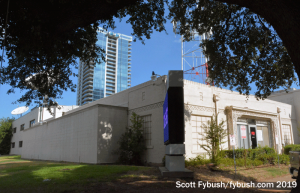
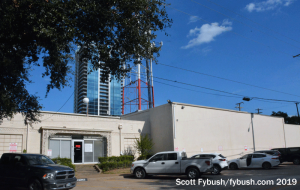
Look closely at that corner and you’ll see what’s clearly a much older building. That emergency exit at the back of some offices? Rewind 70 years and it was the main entrance to the first TV station to hit the airwaves in Dallas.
KBTV signed on here September 17, 1949 on channel 8, three weeks ahead of KRLD-TV (Channel 4) and a year after Fort Worth’s WBAP-TV (Channel 5). Remarkably for an early TV station in a growing city, it lost money for its owner, oil magnate Tom Potter, who soon sold it to the Dallas Morning News, which quickly renamed it WFAA-TV to go along with its WFAA radio.
WFAA-TV quickly outgrew this site; by the mid-1950s, it had moved its transmitter to a giant candelabra at Cedar Hill shared with KRLD-TV (and eventually WBAP-TV), and as the 1960s dawned, channel 8’s studios and offices moved downtown to the state-of-the-art Communications Center building next to the Morning News offices on Young Street.
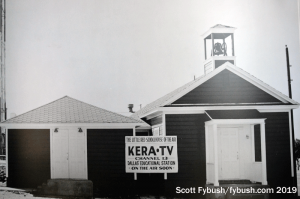
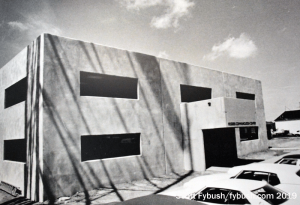
The timing turned out to be perfect for a scrappy new player on the TV dial: 1960 was also the year that proponents of educational TV put KERA-TV on the air. The new station, affiliated with the Dallas Independent School District, initially planned to use the WRR tower at Fair Park but instead took over the old KBTV tower. It drew its callsign from the original FM station affiliated with WFAA (an ancestor to the eventual WFAA-FM 97.9, today’s KBFB), and it made its initial studio home in two mobile structures that went up just north of the WFAA-TV building.
Billing itself as the “Little Red Schoolhouse of the Air,” it was only natural that KERA-TV painted its new buildings red and decorated one of them to look like a schoolhouse. It didn’t stay there long; once WFAA-TV moved downtown, it donated its old building to KERA, which has been growing on this site ever since.
In the 1970s, KERA built a new office building just north of the original KBTV building (adding room for the new KERA-FM, which signed on in 1974), and in the 1990s it added a much larger brick and glass expansion stretching north between Harry Hines and Harwood Street to the present main entrance.
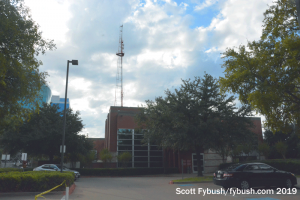
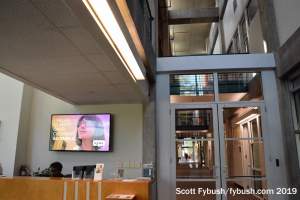
By then, KERA had moved its transmitter down to Cedar Hill, leasing space from KTVT-TV and leaving the old self-supporter here as just an STL tower, surrounded by these growing studios.
Shall we have a look inside?

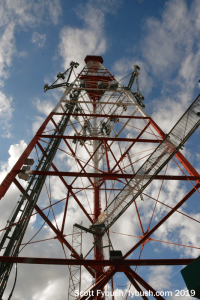
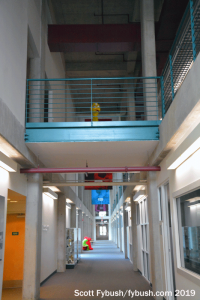
KERA’s current lobby opens into a long two-story hallway atrium that runs the length of its newer buildings and connects to the 1970s-era building at the far end. KERA’s master control was here originally, and there’s still control-room space along the first floor hallway, though today KERA-TV is part of the Digital Convergence Alliance joint master control hub in Jacksonville, Florida.
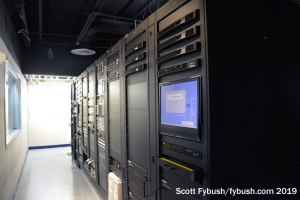
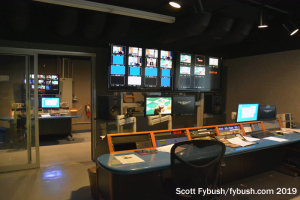
At the far end of the hall, we emerge back outdoors under the 1949-vintage tower, where a short breezeway connects us to the original KBTV/WFAA building that still houses KERA’s TV studios and production area.
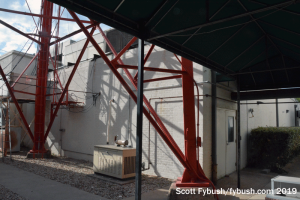
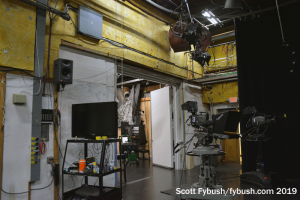
Imagine all the TV history that’s happened in these venerable studio spaces, from the early KBTV/WFAA live programming to everything KERA has done over the years; among other things, this is where a young Jim Lehrer moved from newspapering to television, anchoring “Newsroom” on channel 13 and developing the format he and Robin MacNeil would bring to PBS later in the 1970s.
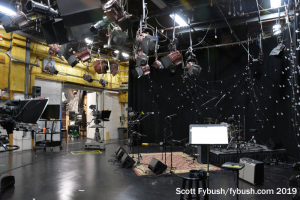
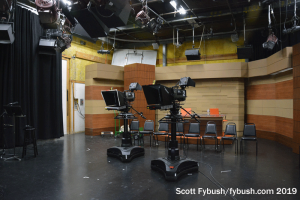
KERA produces all of its local TV programming in these studios, as well as an increasing amount of live music for its newest radio venture, AAA-formatted KKXT (KXT 91.7). And what’s that on the wallboards by the studio doors? Everyone famous who comes through here for an interview or a performance signs them, and it’s quite the who’s who by now.
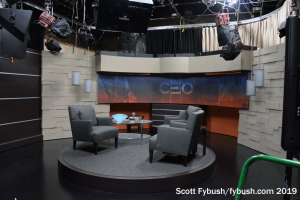
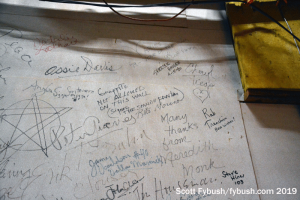
Returning to the newer part of the facility, we head upstairs to the radio side of the operation. KERA-FM goes back to 1974, though it’s only in more recent years that it’s focused its format entirely on news and talk; KKXT came along in 2009, when KERA purchased what had been a religious station, KVTT, turning its frequency into a fulltime AAA format.
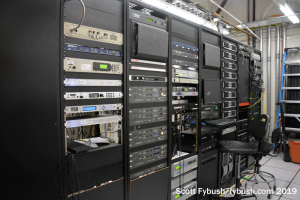
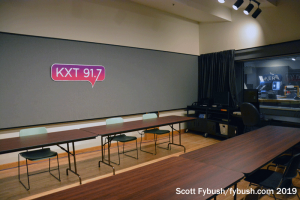
Even though it’s been only a year and a half since we took these photos, we’re going to want to come back for another visit once we can, because there was a renovation project getting underway as we were touring the long line of radio studios up here on the second floor.
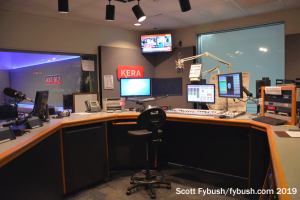
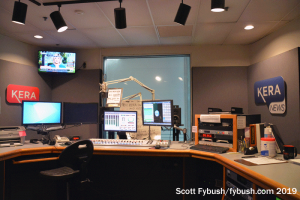
There’s a big studio for some KKXT live performances and pledge drives, and a spacious pair of studios for KERA’s radio master control and for the “Think” talk/interview show that originates here and is distributed nationwide to public radio. (KERA is also a producing partner of the daily “Texas Standard” magazine show that broadcasts from KUT in Austin.)
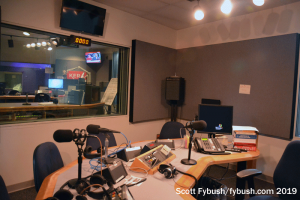
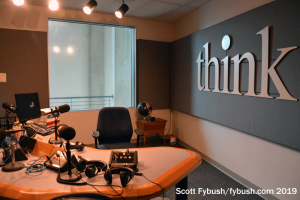
Down the hall, the studio space for KXT is lined with album covers from some of the artists it plays (it’s one of our favorite AAA stations!), and there’s lots of office space surrounding the studios for radio programmers, newspeople and the membership staff.
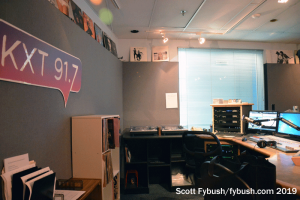
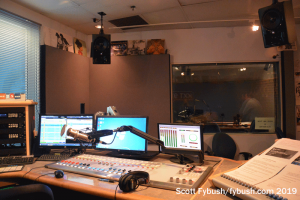
From here, it was back to the nearby Anatole hotel for the NAB Radio Show – and little could we have known it would be the last radio convention we’d be able to attend for at least two years, or that this thrilling Texas trip would be the last time we’d fly anywhere interesting for radio travel for quite a while.
Thanks to KERA’s Edward Hedge for the tour!
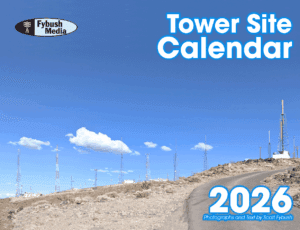
As we announced a few weeks ago, the 2026 edition of the Tower Site Calendar will be the last.
We began publishing it 25 years ago, and the broadcast landscape is radically different now.
Radio World just ran an excellent article about us if you want to know more.
Once it’s gone, that’s it. We won’t be printing any more.
Thank you to everyone who saw our announcement and rushed to buy it. We appreciate you.
(There are some calendars from previous years if you want more of a tower photo fix — all under $5.)
But don’t wait to get this year’s Tower Site Calendar — buy it now!
We are selling the Broadcast Historian’s Calendar again this year, but we have that in an even smaller quantity — definitely don’t hesitate for that.
And visit the Fybush Media Store to check out our selection of books and videos, too!
And don’t miss a big batch of Texas IDs next Wednesday, over at our sister site, TopHour.com!
Next week: The former Newseum, Washington
In this week’s issue… Veteran newsman returns - Remembering NY's Leitner, RI's Jones - CT AM saved - Maine AM moves - "Indie" adds suburban signals
In this week’s issue… Scripps stations face takeover - Sinclair moves more affiliations - CT stations sold - Maine AM surrendered - Remembering WVBR's Shapiro, WABC's Morgan
In this week’s issue… CT TV legend succumbs to cancer - Remembering PA's Adams - FCC still stalled by shutdown - Pittsburgh morning host exits
In this week’s issue… FCC faces reopening challenges - Veteran Boston anchor retires - Morning shift in Toronto - NYC FMs expand reach